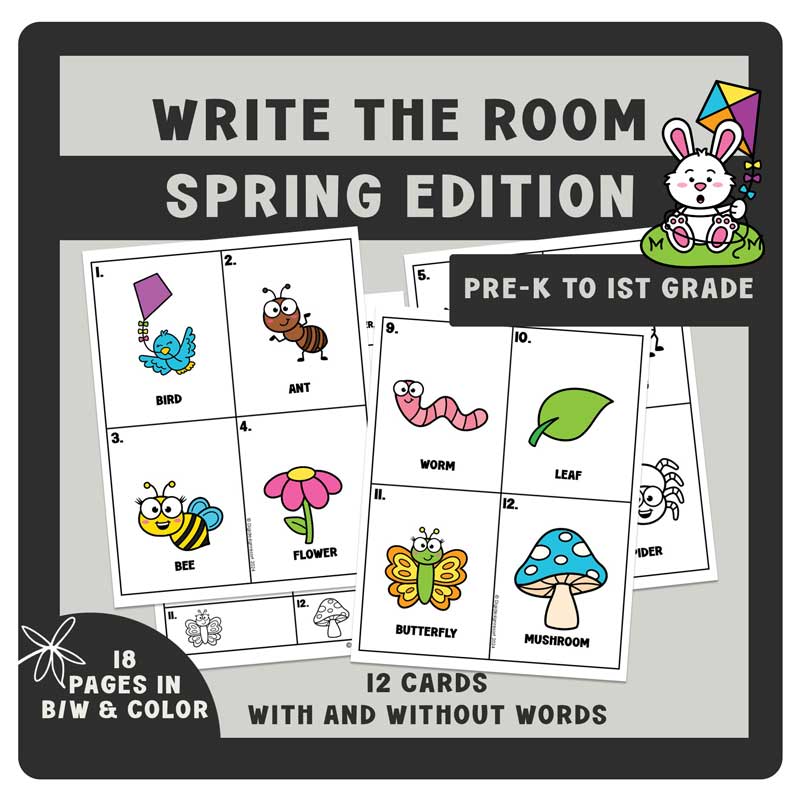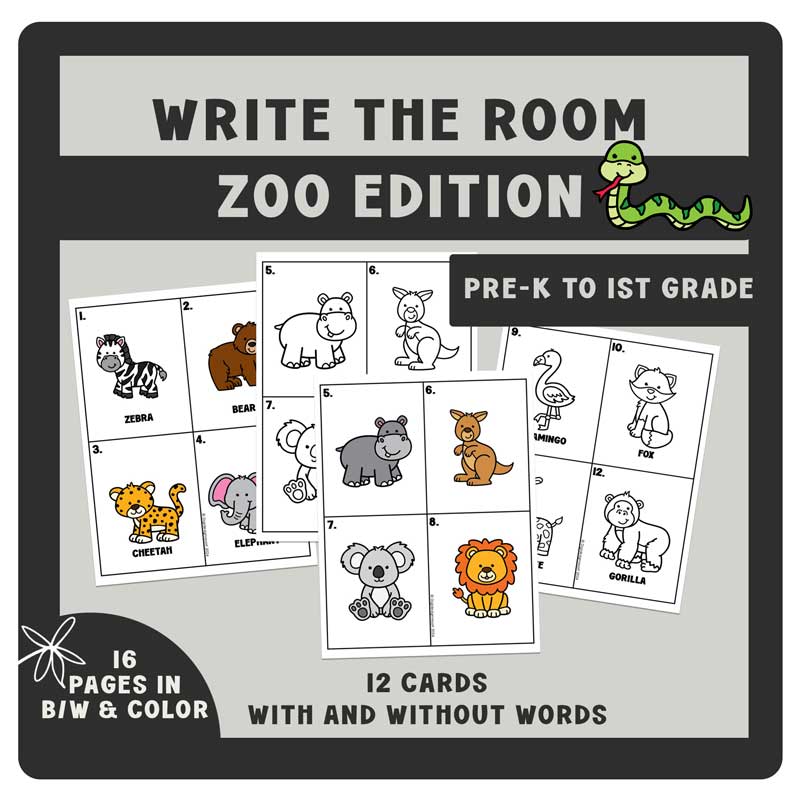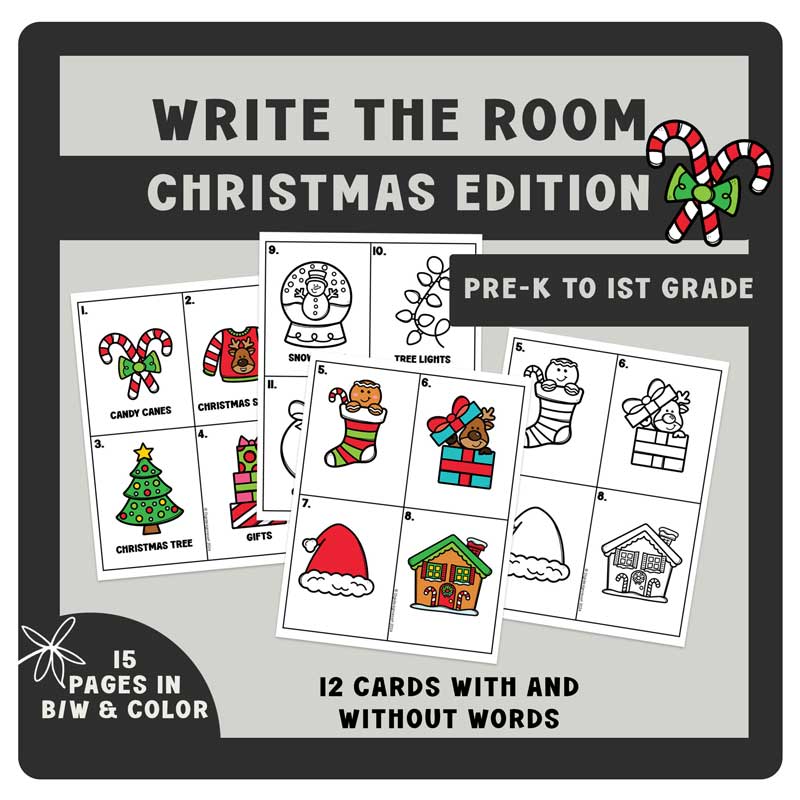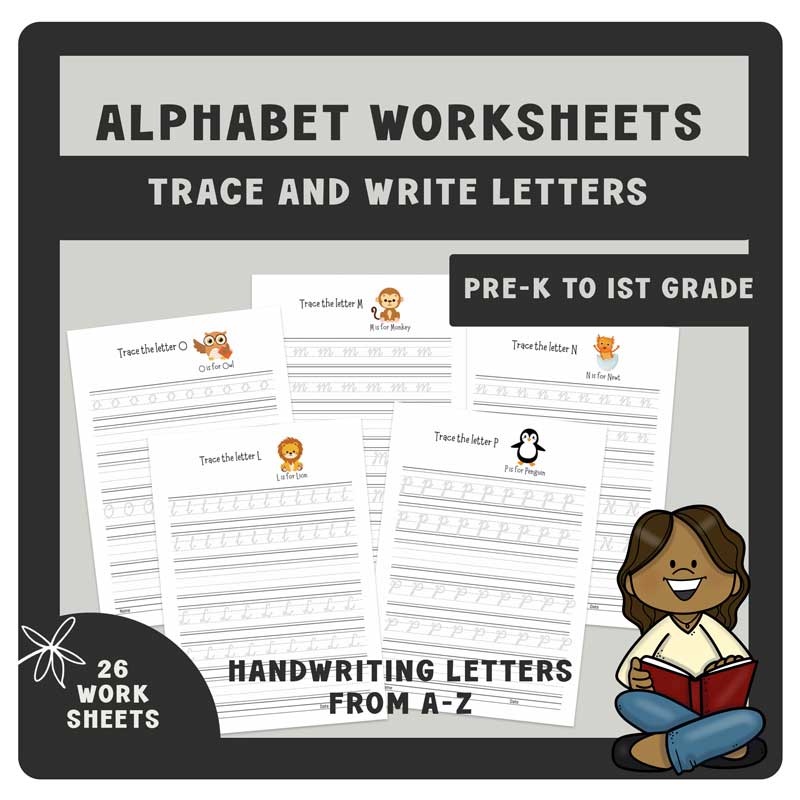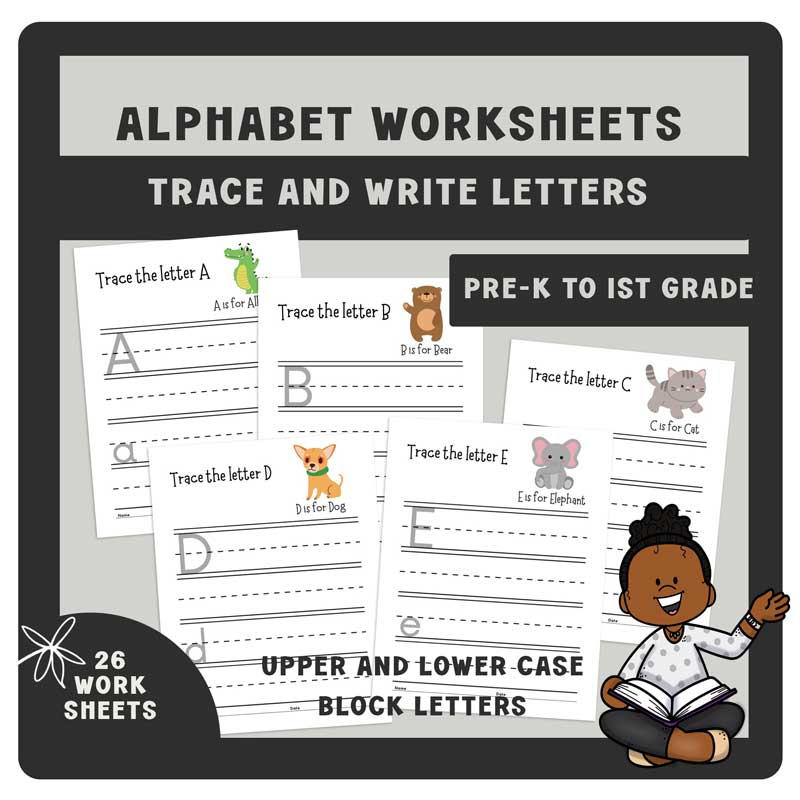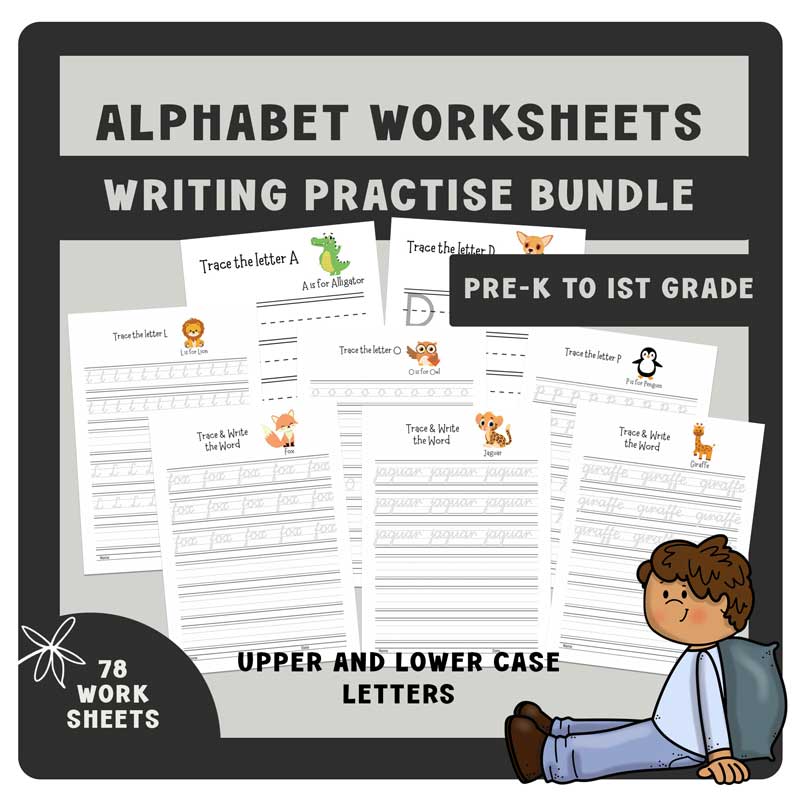I remember well when I learned to read. I wanted to learn reading with all my heart - because: Mom did it. And I wanted to read the books Mom had shown me myself.
So the first year at school I read whatever I could find. I found myself in the bathroom reading the shampoo bottles and words on it which were strange to me. And then I learned something new at school and -yay- it all of a sudden made sense! So piece by piece the puzzle came together and I guess that's the way we need to teach our kids reading. Reading is not just a necessary skill. For me it is also a loved hobby!
So let's start with letter recognition activities.
Letter recognition is one of the first steps in learning to read and write. It helps children understand the relationship between letters and sounds, forming the foundation for literacy. Teaching letter recognition can be a fun and interactive experience when approached with engaging activities, multisensory techniques, and a structured progression. In this guide, we’ll explore the best ways to help young learners master letter recognition while keeping the process enjoyable.
I gave the letter tracing sheets to my godchild. She is six years old and just started school. She was allowed to print them herself and she did - based on the little animals in the corners. In the end she had printed all sheets and traced letters she hasn't known so far - I showed her how to write them and this way she quickly learned new letters!
However, the attention span wasn't that long ;-). I guess it's pretty exhausting for a young learner to do letter recognition activities.
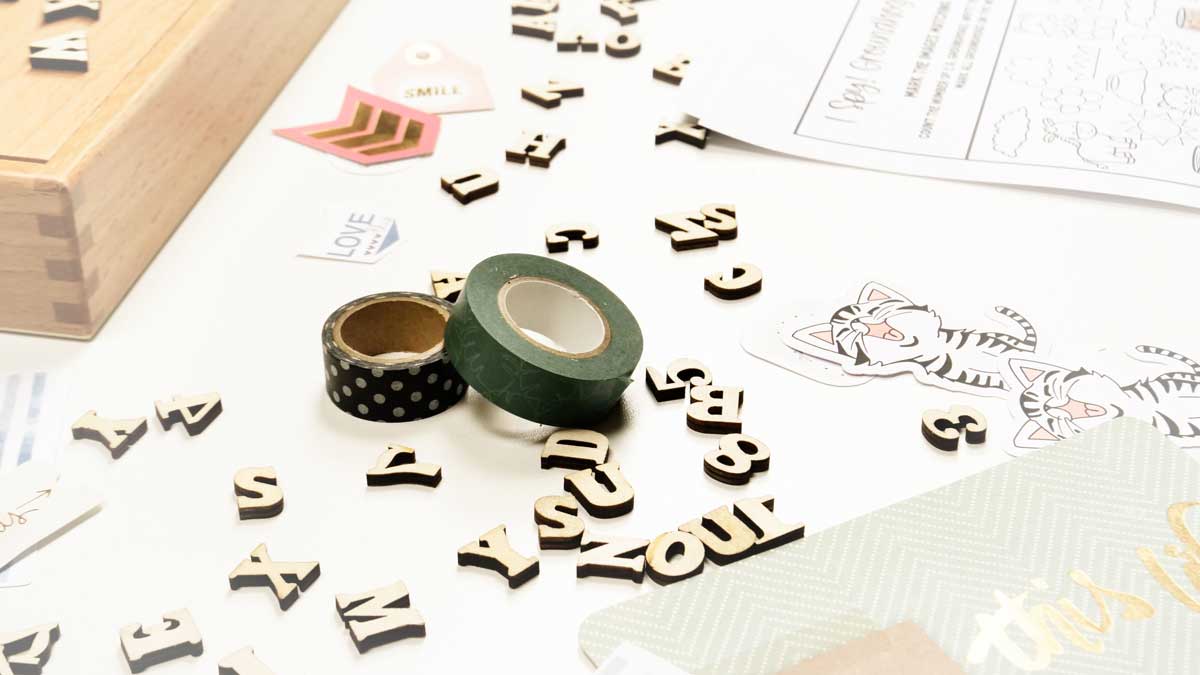
Why Letter Recognition is Important
Letter recognition is essential because it
- ...helps children associate letter shapes with their names and sounds.
- ...builds the foundation for phonics and early reading.
- ...supports vocabulary and communication development.
- ...enhances fine motor skills as children begin to write letters.
1. Start with the Child’s Name
Children are naturally interested in their names, making it a great starting point for letter recognition.
Name Tracing: Write the child’s name in large letters and let them trace it with a finger, crayon, or marker.
Name Puzzles: Cut out the letters of their name and have them arrange them in order.
Letter Hunt: Highlight the first letter of their name in books, magazines, or signs around the house or classroom.
First Task "Learn to write your Name"
It's also a great idea to have the kids write the letters of their name first on worksheets before you puzzle them together as their name.
Then they already have developed some muscles to write the different letters. So my advice here would be to work each day on one letter. Take your time for the first words. Your child will thank you for that later!
Give your child the worksheet for the first letter of its name, have him trace the letter and maybe yes, do a letter hunt later that day.
The next day you move on and print a worksheet of the second letter. Again, have him trace it several times and then, again later that day, cut out the letter from a newspaper (or the worksheet). You could also do a little repeat of letter one from the day bevor.
Proceed like this and once you are finished write the entire name on a sheet so your child can trace the entire name himself.
Mix and match the different ideas above to practise the letters.
2. Use Multisensory Activities
Engaging multiple senses helps children retain information more effectively. It all depends on which type of learner your child is. Some kids enjoy moving while learning. Others like to listen and the next group needs to see things that it makes sense. Support whatever your child prefers.
Tactile Tracing: Have children trace letters using textured materials like sandpaper, felt, or foam letters. That's great for children who need to feel things!
Playdough Letters: Encourage kids to roll and shape playdough into letter forms. That's great for children who like to work with their hands.
Shaving Cream Writing: Spread shaving cream on a table and let children write letters with their fingers.
Salt or Sand Trays: Pour a thin layer of salt or sand in a tray and have children write letters using their fingers or a stick.
Maybe the last two suggestions are activities you can better do outside 😉
3. Introduce Letters in a Logical Sequence
Instead of teaching letters in alphabetical order, introduce them in a sequence that promotes early success. (That's similar to writing your child's name first).
Start with High-Frequency Letters: Begin with letters found in the child's name and common words.
Teach Uppercase Before Lowercase: Uppercase letters are visually simpler and easier to recognize.
Group Letters by Shape or Sound: Teach letters with similar shapes (e.g., b, d, p, q) together while emphasizing their differences.
4. Incorporate Music and Movement
Children love to move and sing, making these strategies highly effective.
Alphabet Songs: Sing songs that highlight letter names and sounds.
Letter Hopscotch: Write letters on a hopscotch grid and have children say the letter’s name or sound when they jump on it.
Letter Scavenger Hunt: Hide letter flashcards around the room and encourage children to find and name them.
Write the Room: Place letter cards around the classroom (or at home) and have children walk around and write down the letters they find.
5. Read Alphabet Books
Books help reinforce letter recognition while introducing vocabulary and phonics.
Interactive Alphabet Books: Choose books with flaps, textures, or pop-ups to keep children engaged.
Letter-Focused Stories: Read books that emphasize a particular letter on each page (e.g., "Chicka Chicka Boom Boom").
Point and Name Letters: While reading, point out letters and ask children to identify them.
6. Play Letter Recognition Games
Games make learning fun and encourage repetition.
Letter Bingo: Use letter cards instead of numbers on a bingo board.
Memory Matching: Create a memory game where children match uppercase and lowercase letters.
Alphabet Puzzles: Provide puzzles where children match letters to pictures that start with the corresponding sound.
Magnetic Letters: Use magnetic letters on a fridge or whiteboard for arranging and recognising letters.
7. Integrate Letter Recognition into Daily Life
Incorporate letters naturally into everyday activities.
Label Items: Label furniture, toys, and household objects with their names and first letters.
Grocery Store Game: Ask children to find letters on food packaging while shopping.
Environmental Print: Use road signs, cereal boxes, and restaurant logos as real-world letter-learning opportunities.
8. Provide Hands-On Writing Practice
Once children recognize letters, help them begin writing with guided practice.
Tracing Worksheets: Use worksheets that allow children to trace letters before writing independently.
Dry Erase Boards: Give children dry erase markers and boards for freehand letter practice.
Letter Stamping: Provide letter stamps or stickers to reinforce recognition and writing.
Sensory Writing: Have children write letters with fingers in finger paint, sand, or shaving cream.
9. Use Technology Wisely
Educational apps and websites can reinforce learning through interactive activities.
Letter Recognition Apps: Use apps like ABCmouse, Starfall ABCs, and Endless Alphabet.
Interactive Whiteboard Games: If available, incorporate digital learning tools into lessons.
Online Alphabet Songs and Videos: Show engaging videos that emphasize letter sounds and recognition.
10. Be Patient and Make Learning Fun
Every child learns at their own pace, so focus on encouragement and enjoyment.
Celebrate Progress: Praise efforts and small achievements to boost confidence.
Avoid Pressure: Keep lessons lighthearted and adapt activities to the child's interests.
Follow Their Interests: If a child loves animals, use animal-themed letter activities.
Letter recognition is a crucial early literacy skill that sets the foundation for reading and writing success. By using a mix of hands-on activities, music, movement, and real-life applications, parents and teachers can make learning letters an exciting and rewarding experience. Whether through tracing worksheets, alphabet games, or interactive books, creating a fun and engaging environment will help young learners develop strong literacy skills.
Looking for a Ready-to-Use Letter Tracing Resource?
Check out my Alphabet Practice Writing Letters and Words Tracing Print Worksheets to give your child or students structured, engaging letter recognition and writing practice!
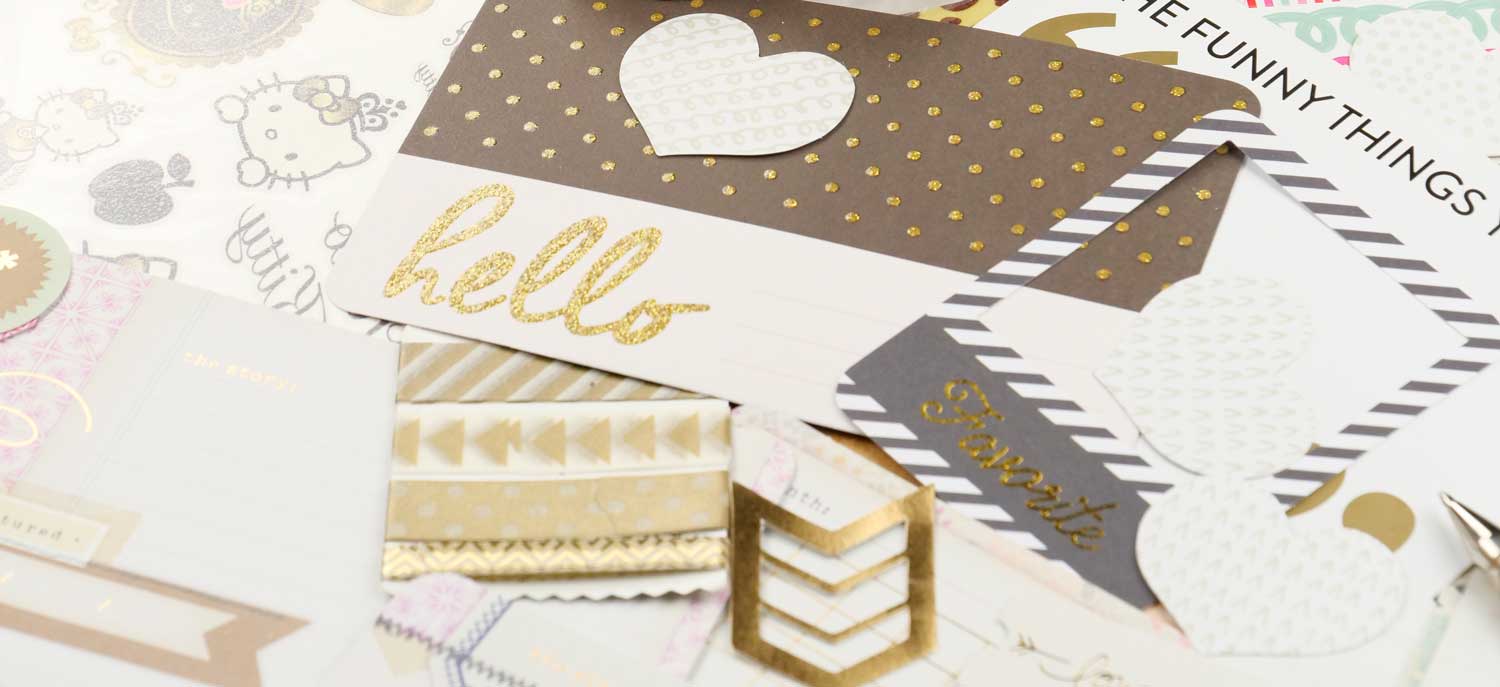
Pepper Printable Club
Join the Pepper Printable Club for the fun in life and get 100s of Printable, Learning Sheets and SVG files along with graphic sets for scrapbooking and more! Additionally, you'll find video lessons there as well!
It's a lovely place to be to relax from the everyday life!

